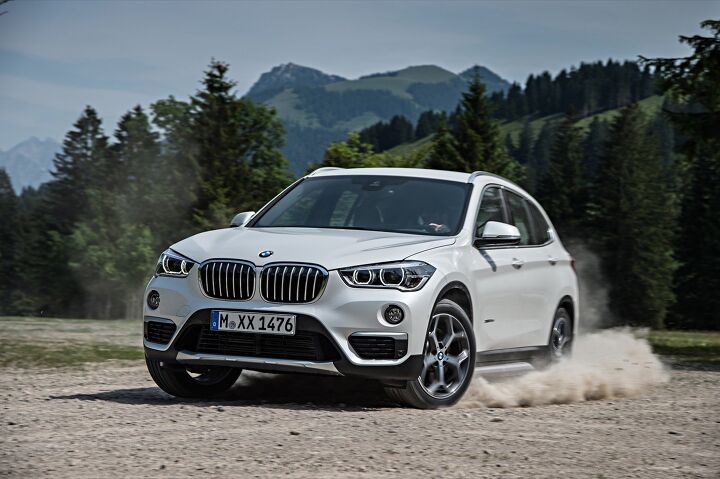Love for Luxury Cars in California and Florida Is Skewing National Luxury SUV Market Share
Depending where you live, it’s possible the shift away from luxury cars to luxury SUVs is dramatically more apparent than America’s nationwide figures suggest.
In 48 of 50 states, luxury utility vehicles outsell luxury cars. In seven states, premium brand utility vehicles form more than 65 percent of the premium market.
But according to Edmunds, the two states in which luxury cars still outperform luxury utility vehicles account for 31 percent of America’s luxury SUV market.
California and Florida, massive auto markets for mainstream vehicles and premium vehicles, are particularly sunny locales. And in particularly sunny locales, a portion of the appeal of utility vehicles — all-wheel drive — is siphoned off by the sun.
Premium utility vehicles are making headway even with less-than-average assistance from car buyers in the extreme southwest and southeast of the United States. 56 percent of luxury brand vehicle acquisitions now occur on the light truck side of the ledger, as the popularity of luxury SUVs and crossovers causes premium auto brands to report relatively stable sales despite rapidly decreasing luxury car sales.
As recently as 2002, utility vehicles accounted for barely more than 20 percent of premium brand auto sales in America. That figure was above 30 percent in 2004, nudging 40 percent in 2010, and cresting 50 percent by the end of 2015.
Now we’ve reached the point where only a handful of premium brands — BMW, Mercedes-Benz, Jaguar, plus new-to-market Alfa Romeo and Genesis — sell more cars than SUVs/crossovers. With each of those brands planning more utility vehicles (X2 and X7 at BMW, for instance, plus the new E-Pace at Jaguar) it won’t be long until every premium auto brand generates more of their U.S. volume with SUVs and crossovers than cars.
Acura, Volvo, Lexus, Cadillac, Porsche, Infiniti, and Lincoln all produce more than 60 percent of their sales with utility vehicles.
“Luxury,” of course, is increasingly a difficult term to define. With premium brands marketing subcompact luxury crossovers, what is luxury? Mainstream brands have transaction prices for large SUVs rising above $60,000, Edmunds data shows, while subcompact luxury crossovers’ average transaction prices are at $38,000, in line with midsize SUVs/crossovers sold by mainstream brands.
That move downmarket has created massive conquest opportunities for premium auto brands. At 32 percent, the percentage of premium auto buyers who traded in a mainstream brand vehicle is at an all-time high in 2017, and half of the buyers in that subcompact luxury utility vehicle segment move over from a mainstream brand.
[Images: BMW, Jaguar]
Timothy Cain is a contributing analyst at The Truth About Cars and Autofocus.ca and the founder and former editor of GoodCarBadCar.net. Follow on Twitter @timcaincars.
More by Timothy Cain
Latest Car Reviews
Read moreLatest Product Reviews
Read moreRecent Comments
- Ltcmgm78 Just what we need to do: add more EVs that require a charging station! We own a Volt. We charge at home. We bought the Volt off-lease. We're retired and can do all our daily errands without burning any gasoline. For us this works, but we no longer have a work commute.
- Michael S6 Given the choice between the Hornet R/T and the Alfa, I'd pick an Uber.
- Michael S6 Nissan seems to be doing well at the low end of the market with their small cars and cuv. Competitiveness evaporates as you move up to larger size cars and suvs.
- Cprescott As long as they infest their products with CVT's, there is no reason to buy their products. Nissan's execution of CVT's is lackluster on a good day - not dependable and bad in experience of use. The brand has become like Mitsubishi - will sell to anyone with a pulse to get financed.
- Lorenzo I'd like to believe, I want to believe, having had good FoMoCo vehicles - my aunt's old 1956 Fairlane, 1963 Falcon, 1968 Montego - but if Jim Farley is saying it, I can't believe it. It's been said that he goes with whatever the last person he talked to suggested. That's not the kind of guy you want running a $180 billion dollar company.



































Comments
Join the conversation
Doubtful that many owners of larger mainstream branded vehicles have moved to a subcompact luxury branded vehicle unless they are recent empty nesters. And it goes both ways. There are owners of luxury branded sedans who have moved to loaded, full-size vehicles (SUVs or full-size CUVs) whether it be mainstream brands or premium brands like Buick or GMC.
Manual = Luxury item. Even Ferrari can't afford to them anymore.